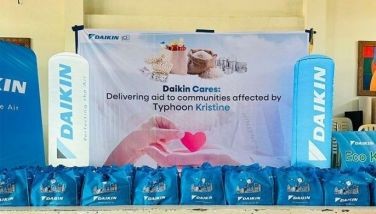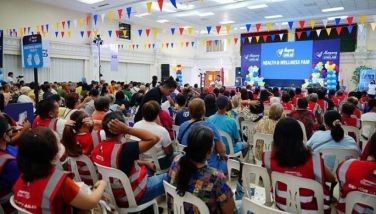Mobilizing support for immunization: Why is it still so hard to save lives?
Fifty years ago, the world’s health leaders launched the Expanded Program on Immunization to vaccinate every child against seven dangerous diseases: diphtheria, measles, pertussis, polio, tetanus, tuberculosis and smallpox.
The program, known by its initials EPI, has been stunningly successful. In five decades, we went from a world in which the death of a child from disease was something many parents feared to one in which every child – if fully vaccinated – could be protected against 13 diseases. The benefits of immunization have extended to adolescents and adults.
Immunization has one of the highest returns on investment of any health intervention. If fully implemented, today’s EPI will avert an estimated 51 million deaths and generate $782 billion in social and economic benefits globally between 2021 and 2030.
But progress on immunization has declined over the past few years. In 2023, 21 million children around the world missed out on one or more recommended vaccines. In the Asia-Pacific region, which has historically high immunization coverage, the trend is worrisome. Immunization coverage has dropped in many countries.
For example, in 2023 routine immunization coverage in Papua New Guinea stood at just 35 percent – far below the recommended level of at least 90 percent – and countries such as Vietnam and the Philippines have grappled with the impacts of prolonged stock-outs of vaccines for routine immunization. If there are no vaccines, there can be no vaccination.
Preventable outbreaks of measles, pertussis, rubella, diphtheria and even polio are once again making headlines. Diseases that our grandparents and parents thought had been relegated to history are making our children sick and causing deaths.
Beyond early childhood vaccination, the Asia-Pacific region has a long way to go to increase coverage of vaccines for adolescents and adults, including the human papillomavirus (HPV) vaccine that protects against cervical cancer. The World Health Organization (WHO) and the United Nations Children’s Fund (UNICEF) are working with national immunization programs across the region to introduce HPV vaccines and achieve high coverage. But much work remains to be done, as only one in four eligible adolescent girls received this cost-effective cancer-preventing vaccine in 2023.
How can it be that one of the best investments in a community’s health, productivity and growth is faltering, and what can be done about it?
We can start by re-examining the way governments, caregivers and health care workers promote vaccination among families and communities that need them. It is not enough to simply tell parents vaccination is necessary. We need a much deeper understanding of the obstacles to immunization as told to us by the people most affected in order to develop solutions that overcome those obstacles.
Next, vaccination programs need to be fully embedded in robust and resilient primary health care services that are accessible to everyone, from remote islands to big cities.
Children’s first vaccinations are often the point of entry for many families into the health system. But primary and community health care staff are often underpaid and informal workers. These (predominantly female) community health workers are the key to providing not just vaccination but also other life-saving care, including nutritional support, illness screenings and bed net distribution to protect families from diseases like malaria.
Another way to reach more children with life-saving vaccines is to push for innovation in vaccine delivery, including the development and deployment of new vaccine technologies, such as needle-free vaccines, and strategies to ensure cold chain integrity in remote areas.
Vaccine security is fundamental for national immunization programs. Every government is responsible for sustaining an uninterrupted supply of routine vaccines at all times. This entails robust systems for procurement, distribution and inventory management, backed by strong political and financial commitments.
In April, WHO and partners launched a 50th anniversary campaign to celebrate EPI’s achievements and renew our collective commitment to ensuring every child is fully protected against vaccine-preventable diseases. The campaign calls on world leaders to advocate, support and fund vaccines and the immunization programs that deliver these life-saving products.
The targets of the Immunization Agenda 2030 – the global strategy adopted by the World Health Assembly in 2020 – are achievable. Within the next 50 years, even broader ambitions are within reach – including the elimination of polio, measles and cervical cancer – but only if we adopt solutions that address the needs of the families and communities we serve.
* * *
Dr. Saia Ma’u Piukala is the WHO Regional Director for the Western Pacific. Debora Comini is the UNICEF East Asia Pacific Regional Director.
- Latest
- Trending
























